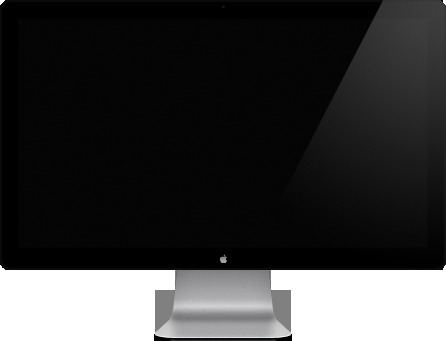Website www.apple.com/displays | ||
 | ||
Release date July 20, 2011; 5 years ago (2011-07-20) Discontinued June 23, 2016 (2016-06-23) | ||
The Apple Thunderbolt Display is a 27-inch flat panel computer monitor that was sold by Apple Inc., introduced on July 20, 2011 and discontinued on June 23, 2016. It was the final standalone display designed and sold by Apple. It replaced the former Apple LED Cinema Display. New to the Thunderbolt Display was the switch from Mini DisplayPort and USB to a single Thunderbolt connection for data transfer between computer and display. The increased throughput from switching to Thunderbolt enabled inclusion of a Gigabit Ethernet port and a FireWire 800 port on the display. Older model Macs introduced prior to 2011 with Mini DisplayPort are incompatible with the Thunderbolt Display.
Contents
27-inch model
Like its LED Cinema Display predecessor, the resolution of the 27-inch model is 2560×1440 pixels, and follows a 16:9 aspect ratio. It was made with aluminium and glass, having a similar appearance to the current ranges of iMac and MacBook Pro unibody designs. The display featured a built-in 720p FaceTime HD camera (replacing the iSight in the previous model), microphone, and stereo speaker system with subwoofer (2.1 channel). An octopus cable combining Thunderbolt and MagSafe is permanently attached to the back of the display for data input and charging laptops, respectively. There is also a separate Thunderbolt port, a FireWire 800 port, three USB 2.0 ports, and a Gigabit Ethernet port.
The Thunderbolt port allows for the possibility of daisy chaining Thunderbolt Displays from a supported Mac, or connecting other devices that have Thunderbolt ports, such as external hard drives and video capture devices.
Apple released Rev B of the Thunderbolt Display (model MC914LL/B) which includes a MagSafe to MagSafe 2 adaptor to the charging cable built into the display.
On June 23, 2016 Apple announced through a statement that it was discontinuing the Thunderbolt Display and would no longer produce stand-alone displays, saying "There are a number of great third-party options available for Mac users." Apple subsequently worked with LG to design Thunderbolt 3 enabled 4K and 5K displays.
Backward compatibility
Apple Thunderbolt Displays, like the video input on Thunderbolt iMacs, drop compatibility with all previous standards, including VGA, DVI, and DisplayPort. They are not compatible with computers that do not have a Thunderbolt port, including pre-2011 Macs and the vast majority of PCs.
